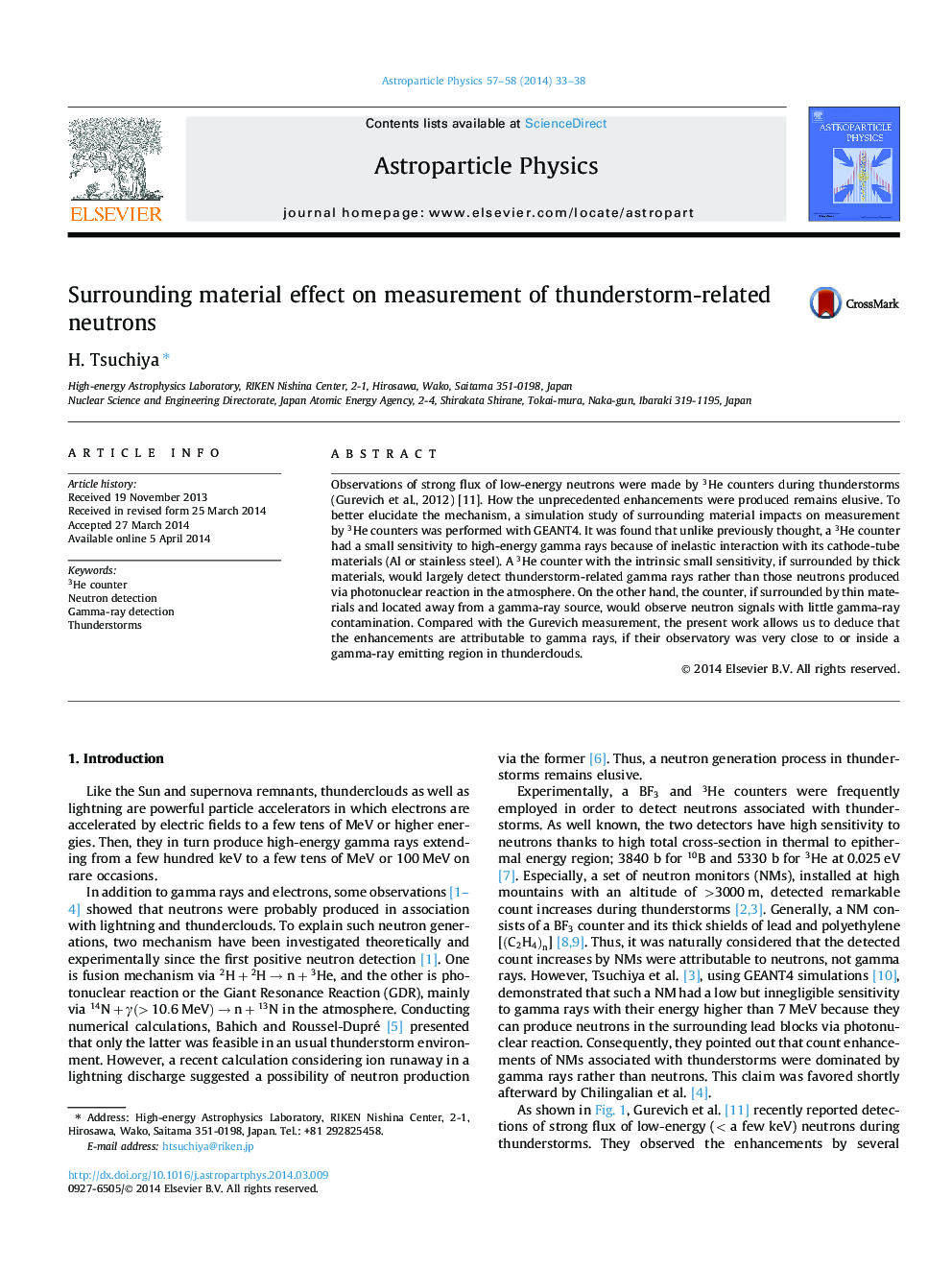| Article ID | Journal | Published Year | Pages | File Type |
|---|---|---|---|---|
| 1770624 | Astroparticle Physics | 2014 | 6 Pages |
Abstract
Observations of strong flux of low-energy neutrons were made by 3He counters during thunderstorms (Gurevich et al., 2012) [11]. How the unprecedented enhancements were produced remains elusive. To better elucidate the mechanism, a simulation study of surrounding material impacts on measurement by 3He counters was performed with GEANT4. It was found that unlike previously thought, a 3He counter had a small sensitivity to high-energy gamma rays because of inelastic interaction with its cathode-tube materials (Al or stainless steel). A 3He counter with the intrinsic small sensitivity, if surrounded by thick materials, would largely detect thunderstorm-related gamma rays rather than those neutrons produced via photonuclear reaction in the atmosphere. On the other hand, the counter, if surrounded by thin materials and located away from a gamma-ray source, would observe neutron signals with little gamma-ray contamination. Compared with the Gurevich measurement, the present work allows us to deduce that the enhancements are attributable to gamma rays, if their observatory was very close to or inside a gamma-ray emitting region in thunderclouds.
Related Topics
Physical Sciences and Engineering
Physics and Astronomy
Astronomy and Astrophysics
Authors
H. Tsuchiya,
